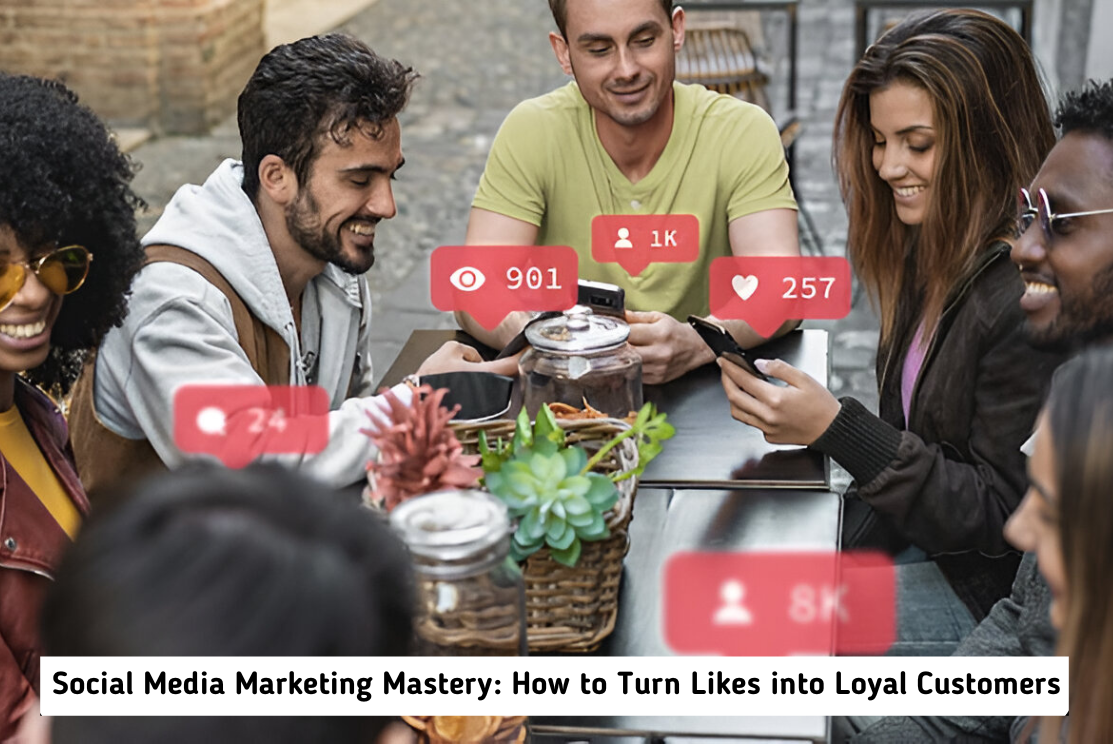Meeting your target audience and customers where they are and as they socially engage with your business and each other is the main goal of social media marketing. Your approach will vary depending on the social networks your audience spends time on, even if social media marketing is immensely effective and helpful for the expansion of your company (as you will see in the next section).
Social Media Marketing Advantages:
Let us examine the experience from the viewpoint of the user to demonstrate the advantages of social media marketing. In other words, my viewpoint. I regularly come across fresh posts and stories from The Frye Company as I go through my Instagram feed (cough, cough…many times a day).
Their boots, clothes, and accessories have always been favorites of mine, but I really adore the stuff they post on Instagram. When people like me view their page, their profile appears polished, creative, and well-organized because all of their photographs have the same filter applied to make sure they match.
By giving users a specific hashtag to use in order to be included on the website when they upload images of themselves using Frye products, the account also promotes communication between the brand and its followers. An excellent illustration of effective social media marketing is Frye’s Instagram account, which engages its over 200K followers, is visually appealing, and effectively advertises their products.
Let’s dive in.
1. Raise awareness of your brand.
Because there are so many people on social media, if you do not have a presence, you are losing out on the chance to connect with thousands or even millions of people.
By increasing engagement such as comments, likes, shares, reposts, and saves social media has actually been shown to increase brand recognition.
Because it drives traffic directly to your website, it also aids in raising brand awareness. Including connections to your website and other offers in your posts, bio, and biography will help you achieve this.
2. Generate leads and boost conversions.
Sharing and promoting your items on social media is an easy approach to increase sales, lead generation, and conversions since you are reaching out to users who have chosen to follow your account and interact with you.
Here are some examples of ways to use social media to generate more leads.
- Make competitions on your social media pages for your fans and visitors to enter.
- Incorporate links to your website and promotions into your profiles’ bio areas.
- Host live videos to announce new products and provide updates or details about exciting news at your company.
- Use one of your channels to launch a social media marketing campaign.
- Sell your products through your social profiles. For example, you can enable Facebook’s Shop Section or Instagram’s Shopping feature on your profiles. These features allow your visitors and followers to click on products you’ve shared in posts to view price, material, and size information.
3. Develop a rapport with your clients.
By interacting and connecting with your social media followers, you may create enduring bonds between your company and them. By engaging with them on your postings, answering their queries and comments, and offering them any assistance they might require, you can do this.
To help you gain their trust and demonstrate your appreciation for their support and feedback, you can also ask your followers questions about your products and their problems or offer them freebies.
4. Learn from your competitors.
Whether it is their social media strategies, the goods they are marketing, the campaigns they are running, or how much engagement they have with their followers, social media is a terrific method to monitor your competition.
Social media gives you the opportunity to see what is and is not working for your competitors, which helps you determine what aspects of your business’s strategy need to modify.
Last but not least, you may ensure that your marketing is distinctive to your business by looking at the social media profiles of your rivals.
Although social media constantly evolves, most foundational steps to succeed stay the same. Essentially, you’re following the same steps you would take to create a marketing strategy and narrowing it to a specific channel.
I’ll cover these steps in more detail so you can begin applying them to your business.

Step 1: Set clear goals.
Establishing your social media goals and making sure they complement your overarching business objectives is the first step in developing a social media marketing strategy.
Ask yourself: What do you want to achieve through your social media efforts? Examples could be increasing brand awareness, driving website traffic, generating leads, boosting customer engagement, or improving customer satisfaction.
After you have established your overarching objectives, divide them into more manageable, achievable tasks. This aids in determining the precise steps and tactics required to accomplish your objectives.
For example, if my goal is to increase website traffic through social media, helpful, actionable steps could include increasing posting frequency, optimizing content for sharing, or running targeted ad campaigns.
Step 2: Research your buyer personas and audience.
Everything Thoreau once stated about erecting castles and laying the groundwork for them is accurate.
Yes, he was undoubtedly not referring about social media marketing, but stay with me for a moment. You have established your objectives (constructed castles), and now you must specify how you will achieve them (the foundation). Without the basis that enables you to achieve your goals, they will be meaningless.
That’s why, after establishing your goals, the next step is to outline how you’ll meet them, and one of the best ways to start is to determine who your buyer personas and audience are so you can target their needs and interests appropriately.
By considering your buyer personas and audience, you’ll then be able to determine what content will attract the type of followers and customers you hope to gain. Plus, learn how to create engaging content to keep your followers interested.
Step 3: Determine which social platforms you’ll market on.
As a social media marketer, it’s important to determine which platforms you’ll use.
It is more important to consider the demands of your target audience, where they spend their time, and the type of material you want to produce than to give you a yes-or-no list of social media platforms that your company should use.
“It’s important to be where your audience of potential customers is today, and where they might be tomorrow,” said Andrew Delaney, former social media marketing manager at HubSpot. “It’s better to be ahead of the curve than behind.”
Think about each platform’s areas of expertise when deciding what kind of content you want to produce. For instance, your best option is to distribute video-forward material on a platform that supports it, such as YouTube.
However, I can only recommend this type of experimentation for businesses with established marketing strategies on platforms that work and deliver your desired results. Placing all of your stake in something new if you’re just getting started can do more harm than good.
Step 4: Establish your most important metrics and KPIs.
Data should guide your social media approach, regardless of your business or ambitions. This entails concentrating on the important social media indicators. Examine data that directly relates to your objectives rather than vanity measures.
What metrics am I talking about? Check out the breakdown below:
- Reach. The quantity of distinct users who viewed your content is known as post reach. What percentage of your material does users actually see in their feeds?
- Clicks. This represents the quantity of clicks on your account or article. To find out what piques people’s interest or motivates them to make a purchase, it is crucial to track clicks for each campaign.
- Participation. the amount of impressions divided by the total number of social interactions. This demonstrates how favorably your audience thinks of you and how open they are to communication.
- Hashtag performance. What were your most-used hashtags? Which hashtags were most associated with your brand? Having these answers can help shape the focus of your content going forward.
- both sponsored and natural likes. These interactions, which go beyond a typical “Like” count, are ascribed to either organic or sponsored content. Many brands resort to advertisements since it is far more difficult to obtain organic engagement. Understanding these variations might assist you in allocating your time and ad money across various formats.
- Sentiment. This measures how users react to your content, brand, or hashtag. Did customers find your recent campaign offensive? What type of sentiment do people associate with your campaign hashtag? It’s always better to dig deeper and discover how people talk or feel about your brand.
Step 5: Get to know your competition.
Understanding the current status of your industry is crucial, especially when it comes to your competition, regardless of how long you have been using social media marketing.
Here’s where I recommend a reliable competitive analysis, which enables you to identify the competitors and learn about their strengths and weaknesses. Setting your own social media goals will be made easier if you have a solid understanding of what is anticipated in your sector.
Pro Tip: I recommend monitoring your competitors’ customer reviews to gain insights into what their customers like and dislike about them. Pay attention to common complaints or recurring themes to understand their pain points, and aim to solve those pains in your own strategy.
Step 6: Create unique and engaging content.
With billions of individuals using social media worldwide, it is safe to assume that at least some of your followers or profile visitors have also seen the content of other companies in your sector or your competitors.
This is why it’s important to have engaging social media content that stands out and provides viewers with a reason to click that “Follow” button and interact with your brand. If your content keeps them engaged, social media algorithms will also work in your favor and prioritize showing them your content because they’ve demonstrated an interest in it.
Start Marketing on Social Media
Given that there are billions of users on social media today, it is simple to understand why so many companies and marketers use the platform to interact with clients and advertise their goods.
Although choosing a social media strategy for your business may seem overwhelming, you can prevent yourself from becoming overwhelmed by learning how social media marketing operates and making use of the information available on the subject (such as this article!).
Start working on your business’s social media marketing strategy today to increase your followers, improve engagement, and boost conversions.

